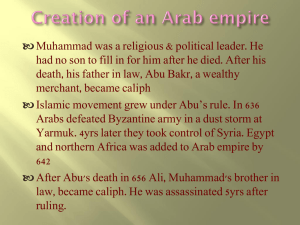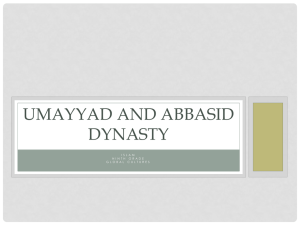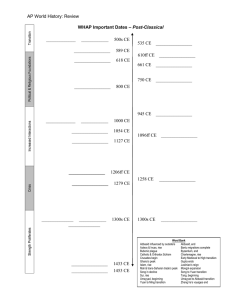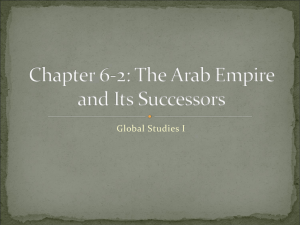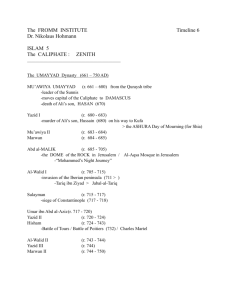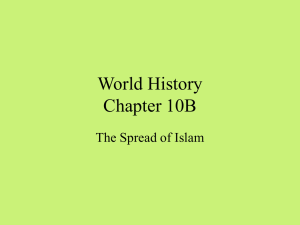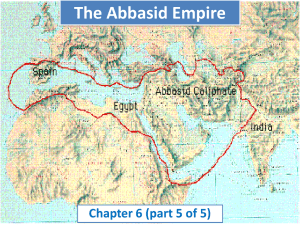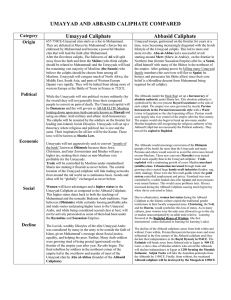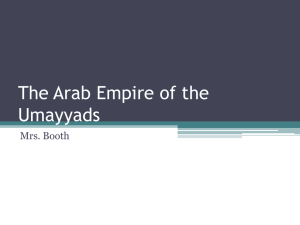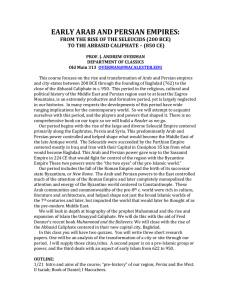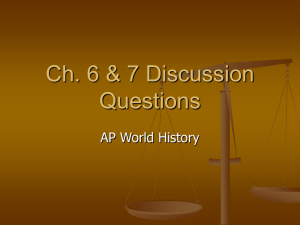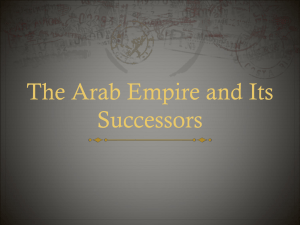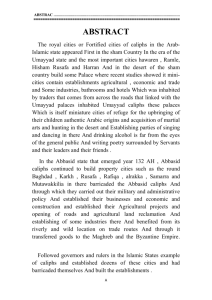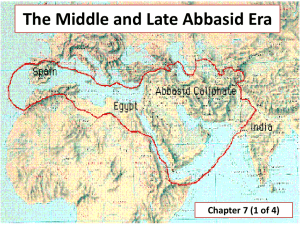dynastic islam
advertisement
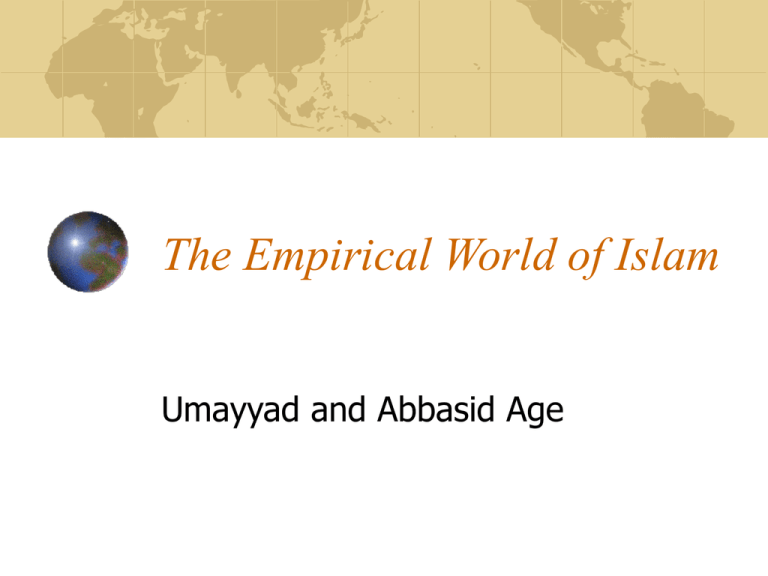
The Empirical World of Islam Umayyad and Abbasid Age Thought Quiz “Islamic beliefs and culture exerted a powerful influence in all areas occupied by Arab armies…through the prism of Islam the areas under Islamic control were dramatically transformed.” Assess the validity of this statement Umayyad Dynasty After Muhammad’s death expansion and uncertainty reigned for a century. The answer to dynastic/caliphate succession was answered by the formation of this dynasty in 661 CE. Arab military aristocracy centered in Damascus Controlled “Dar al-Islam Arab controlled alienated other ethnicities. Jizya Arab/Non Arab Muslims were differentiated Abbasid Caliphate Persian rebellion led by Abu al-Abbas in 750 ended Umayyad rule. More tolerant More “cosmopolitan” and urban Expansion of a lesser interest than under the Umayyad. Did add parts of Europe to their empre Centered around Baghdad Abbasid Achievements Signature leader: Harun al-Rashid Signature event: House of Wisdom Brought down by the Mongol Catastrophe Literary achievements: Arabian Nights (Aladdin) and the Rubiyat Political achievements: Ulama and Qadis Organized bureaucracy and standing army Abbasid Philosophy and Religion Quran and Sharia form moral guidelines Ulama, Qadis agents of judgement of these guidelines Sufi mystics: Al Gahzali, brilliant missionaries Averroes (Ibn Rushd) Other Empires: Seljuk Turks Seljuk Turks: military mercenaries for the Abbasid, challenged the Empire in the 11th Century. Real military and political power in the late Abbasid Age. Routed the Byzantines at Manzikert in 1071 Smaller dynasties Fatimids: Shiite dynasty in Egypt-973 Almohads “Moors” Almohads: Morocco, Southern Spain, Algeria Reconquista
